Search Images
Browse Content (p. 1302)
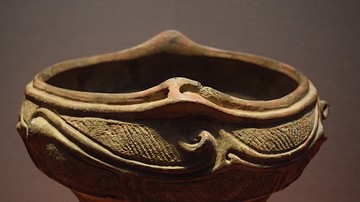
Image
Jomon Bowl (Detail)
A detail of the lip of a deep Jomon bowl. Ubayama Shell Mound, Kashiwai-machi, Ichikawa-shi, Chiba, Japan. Jomon Period, 3000-2000 BCE. (Tokyo National Museum)

Image
Jomon Spouted Vessel
A spouted vessel from Azusawa Shell Mound, Itabashi-ku, Tokyo. Jomon Period 2000-1000 BCE. (Tokyo National Museum)
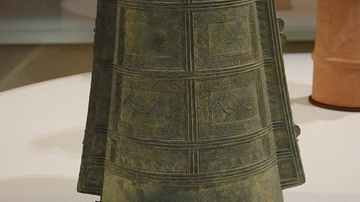
Image
Ritual Dotaku Bell
A bronze Japanese dotaku or ritual bell. From Nakagawa (Akugaya), Hosoe-cho, Kita-ku, Hamamatsu-shi, Shizuoka, Japan. Yayoi Period, 1st-3rd century CE. (Tokyo National Museum)
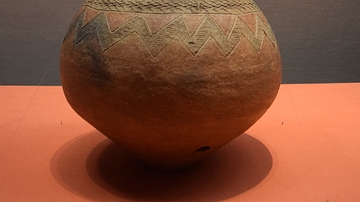
Image
Yayoi Period Jar
A jar of the Yayoi Period, 1st-3rd century CE. From Kugahara, Ota-ku, Tokyo. Important Cultural Property. (Tokyo National Museum)
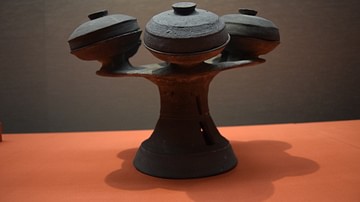
Image
Japanese Stoneware Offering Vessel
An offering vessel of Sue stoneware. From Kanmuriyama Tumulus, Shimoashimori, Kita-ku, Okayama, Japan. Kofun Period, 6th century CE. (Tokyo National Museum)
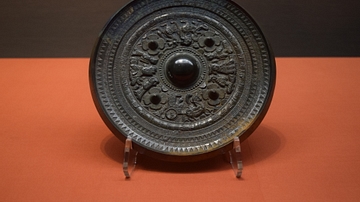
Image
Chinese Bronze Mirror
Engraved Chinese bronze mirror with a deity and horse carriage design. From the 4th-5th century CE Samitatakarazuka Tumulus, Japan. From 2nd-3rd century CE China. Important Cultural Property. (Tokyo National Museum)
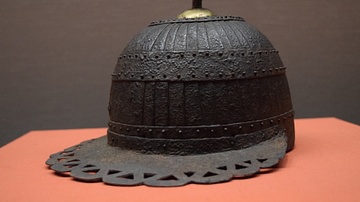
Image
Japanese Visored Helmet
A bronze visored helmet with gilt decoration. From Nihonmatsuyama Tumulus, Matsuokayoshinozakai, Eiheiji-cho, Fukui, Japan. Kofun Period, 5th century CE. (Tokyo National Museum)
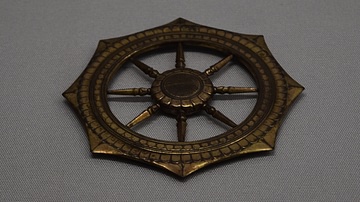
Image
Japanese Dharma Wheel
A gilt bronze dharma wheel used in Buddhist rituals. 13th century CE. (Tokyo National Museum)
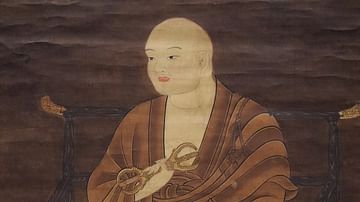
Image
Kukai Silk Portrait
A painted silk portrait of Kukai or Kobo Daishi (774-835 CE) who was a scholar, poet, and monk who founded Shingon Buddhism in Japan. 14th century CE. (Tokyo National Museum)

Image
Knights of the Round Table
A 1475 CE depiction of the knights of the Round Table from Arthurian legend. Here they receive a vision of the Holy Grail. (Evrard d'Espinques, from folio 610v in Bibliothèque Nationale de France)